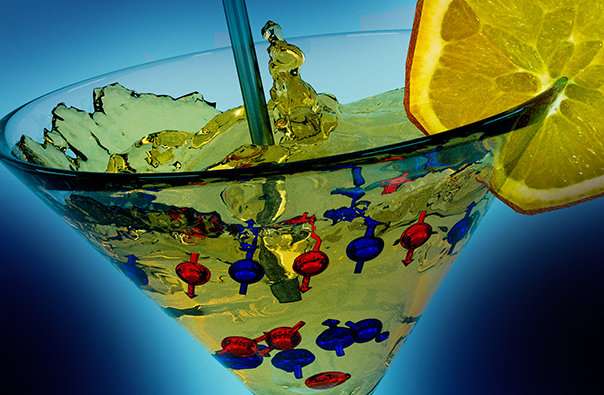Quantum cocktail provides insights on memory control

Experiments based on atoms in a shaken artificial crystal made of light offer novel insight into the physics of quantum many-body systems, which might help in the development of future data-storage technologies.
The speed of writing and reading out magnetic information from storage devices is limited by the time that it takes to manipulate the data carrier. To speed up these processes, researchers have recently started to explore the use of ultrashort laser pulses that can switch magnetic domains in solid-state materials. This route proved to be promising, but the underlying physical mechanisms remain poorly understood. This is largely due the complexity of the magnetic materials involved, in which a large number of magnetic entities interact with one another. Such so-called quantum many-body systems are notoriously difficult to study.
Frederik Görg and his colleagues in the group of Prof. Tilman Esslinger in the Department of Physics at ETH Zurich (Switzerland) have now used an alternative approach to obtain fresh insight into the physics at play in these systems, as they report in a publication that is published today in the journal Nature.
Görg and his co-workers simulated magnetic materials using electrically neutral (but magnetic) atoms that they trapped in an artificial crystal made of light. Even if this system is very different from the storage materials they emulate, both are governed by similar basic physical principles. In contrast to a solid-state environment, however, many unwanted effects resulting for example from impurities in the material are absent and all key parameters of the system can be finely tuned. Exploiting this reduction of complexity and degree of control, the team was able to monitor the microscopic processes in their quantum many-body system and to identify ways to enhance and manipulate the magnetic order in their system.
Most importantly, the ETH physicists demonstrated that by controlled shaking of the crystal in which the atoms reside, they could switch between two forms of magnetic order, known as anti-ferromagnetic and ferromagnetic ordering—an important process for data storage. The fundamental understanding gained from these experiments should therefore help to identify and understand materials that might serve as the basis for the next generation of data-storage media.
More information: Görg F, Messer M, Sandholzer K, Jotzu G, Desbuquois R, Esslinger T: Enhancement and sign change of magnetic correlations a driven quantum many-body system. Nature doi: 10.1038/nature25135 (2018).
Journal information: Nature
Provided by ETH Zurich





















